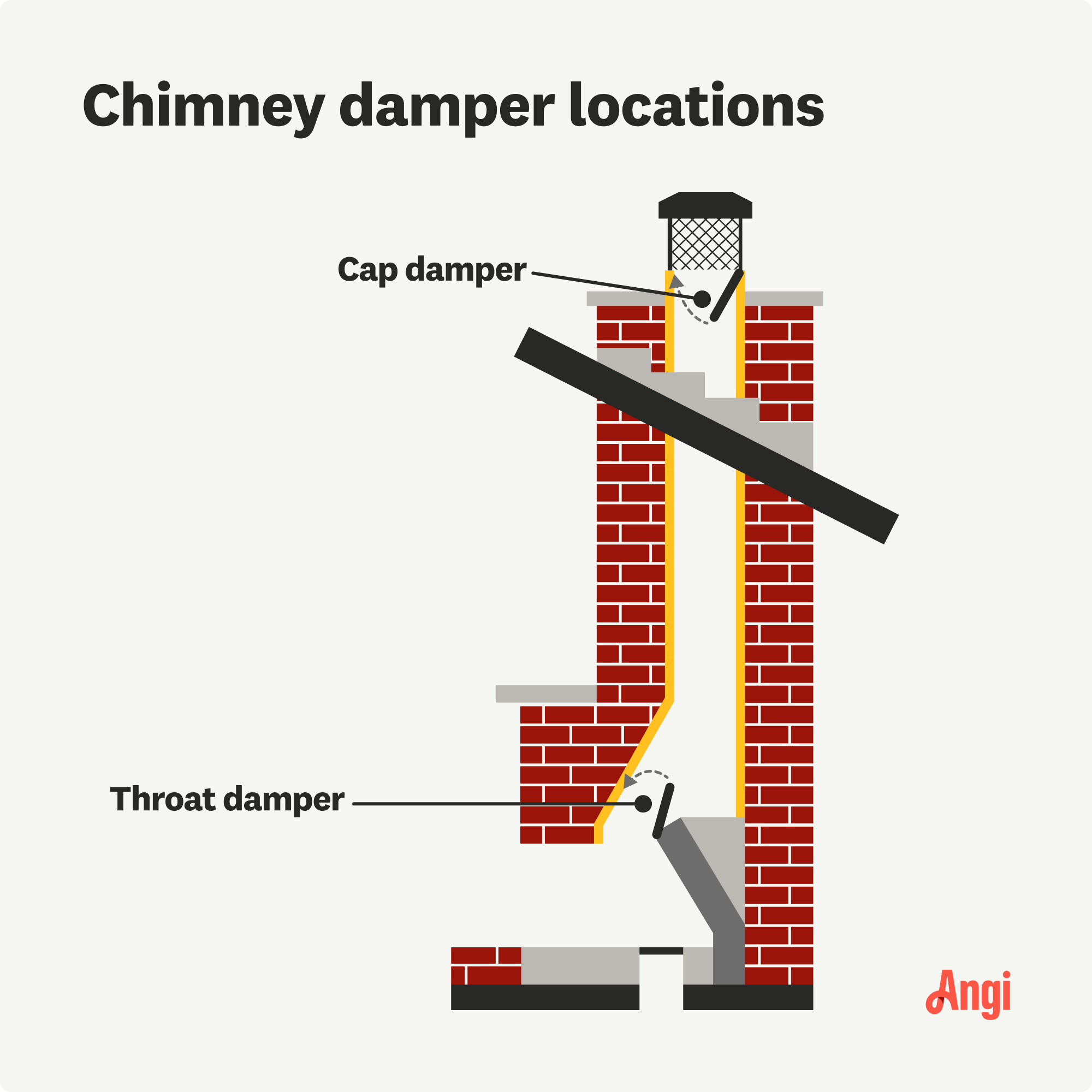
Chimney repair costs can vary by the type of chimney you have and the required repairs. Use this guide to help you estimate project costs.
Keep cold air, debris, and critters from coming down your chimney


Using a fireplace is a fairly straightforward process, but one essential part of the chimney you’ll need to understand how to use is the damper. This small metal or ceramic plate inside the flue puts you in charge of controlling the airflow through your chimney. The damper always stays open when the fire is on, to stop smoke and harmful gasses from filling the room. But if you forget to close the damper after the fire goes out, undesirable drafts, debris, and animals can enter your home.
Follow our step-by-step guide for how to close a chimney damper to help keep your home cozy and critter-free.

Learning how to close a chimney damper is an essential but easy task. After ensuring any previous fire is completely out, you’ll locate the damper control and close it using the lever or pull chain. You’ll also need to know when to close a chimney damper—otherwise, you could end up breathing in mouthfuls of harmful smoke or have sky-high winter energy bills.
Wait for the fireplace flames to go out—or learn how to put out a fire properly—before closing your chimney damper to avoid smoke filling your living room.
Figure out the location of the control for closing your chimney damper. It's most commonly a metal lever, knob, ring pull, or chain. You'll usually find it on the fireplace surround or within the fireplace. You might want to use a flashlight to find the mechanism in a large, soot-covered fireplace.
Traditional throat dampers, positioned at the base of the flue, usually operate via a lever. Top-sealing chimney cap dampers are often controlled by a pulling chain.
You've found the closure mechanism, but now you need to figure out how to work it. If you don't have an instruction manual, do some simple detective work.
Often, you pull the lever down or towards you to close the damper. They sometimes have grooves that allow better control of incremental opening to adjust airflow. Some function in the way a key in a lock does. Knobs need to be fully slid in one direction or the other, and chains often pull down to close dampers. You might hear a distinctive sound when the damper fully closes.
Don a pair of protective leather gloves for this step. If the lever is inside the fireplace, it can be sooty and store residual heat.
Perform a quick physical check to ensure the damper is fully closed. Look up the chimney with the aid of a flashlight and while wearing protective glasses. If you feel a draft or can't see the metal plate of a throat damper blocking your flue, try moving the lever or chain in the other direction before rechecking.
If you're still not sure, light a rolled-up piece of paper directly under the chimney flue. If the damper is open, the airflow will pull the flame upwards.
Never light a new fire when the chimney damper is closed. Smoke, soot, and harmful gasses can quickly fill your room, covering walls and furniture and causing breathing difficulties.
Learning how to close a chimney damper is a must when you have an operational fireplace. When you install a new fireplace, the contractor will explain how to operate it safely and efficiently. If you do it yourself, you'll have the instruction manual for the damper to follow.
If you’ve just moved into a new home with a cozy fireplace and you're not confident you're using the damper properly, you could get a mini masterclass from a chimney sweep near you. You might also need to call a local chimney repair company if the damper is jamming and won't close properly.
From average costs to expert advice, get all the answers you need to get your job done.

Chimney repair costs can vary by the type of chimney you have and the required repairs. Use this guide to help you estimate project costs.

Replacing your chimney increases home value and prevents hazardous structural damage. Learn how much to budget for chimney replacement costs.

Chimney liners are important for fire safety and energy efficiency in your home. Learn how much chimney liners cost based on type, size, material, and other factors.

The chimney is an essential but easy-to-overlook decision when building or renovating a house. Here are the pros and cons of the main types of chimneys.

What is tuckpointing a chimney? Tuckpointing a chimney involves replacing old, damaged mortar to preserve its structural integrity and enhance its appearance.

Many issues cause chimney leaking inside a house. Here is how to identify the source of the problem and take steps to prevent future issues.